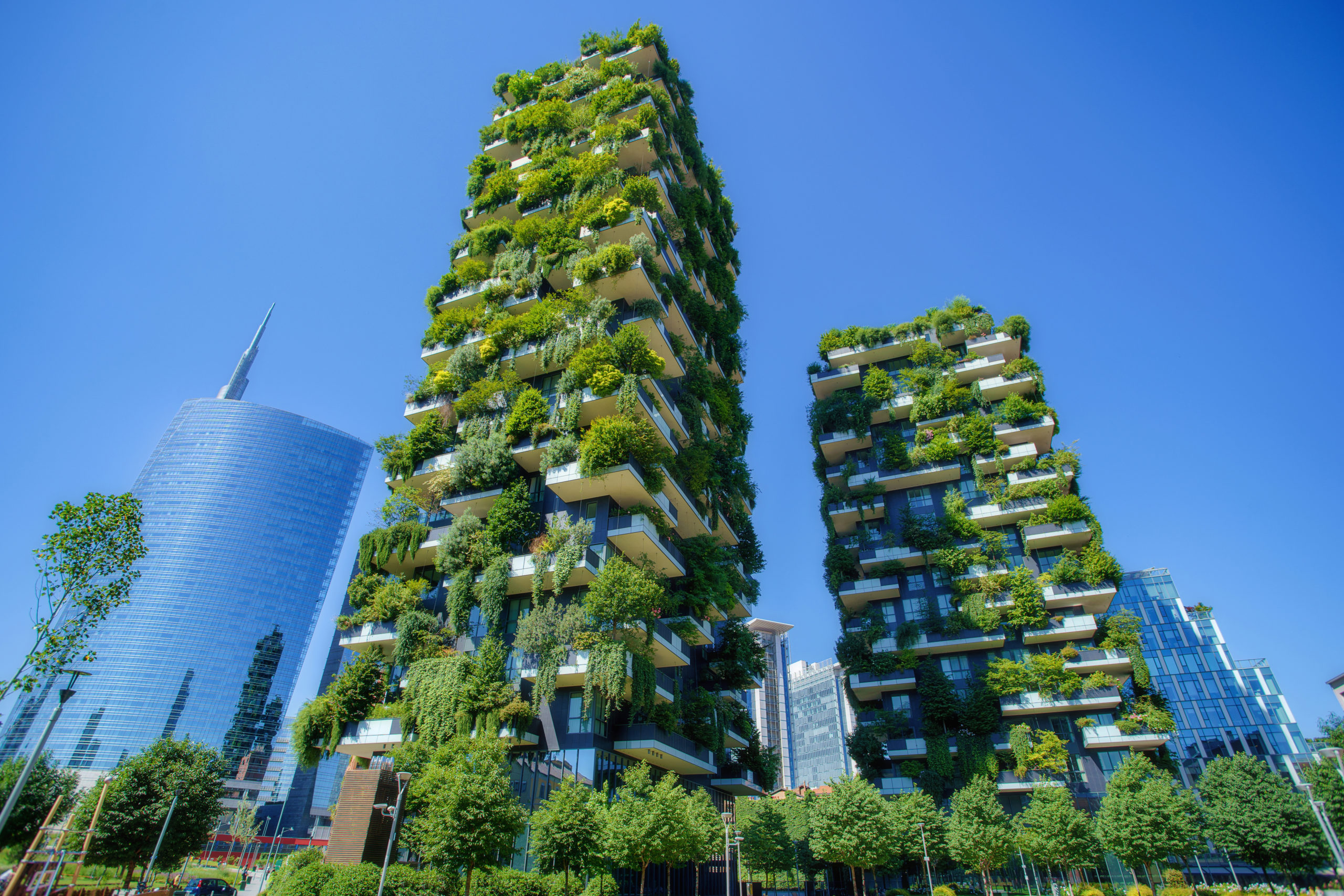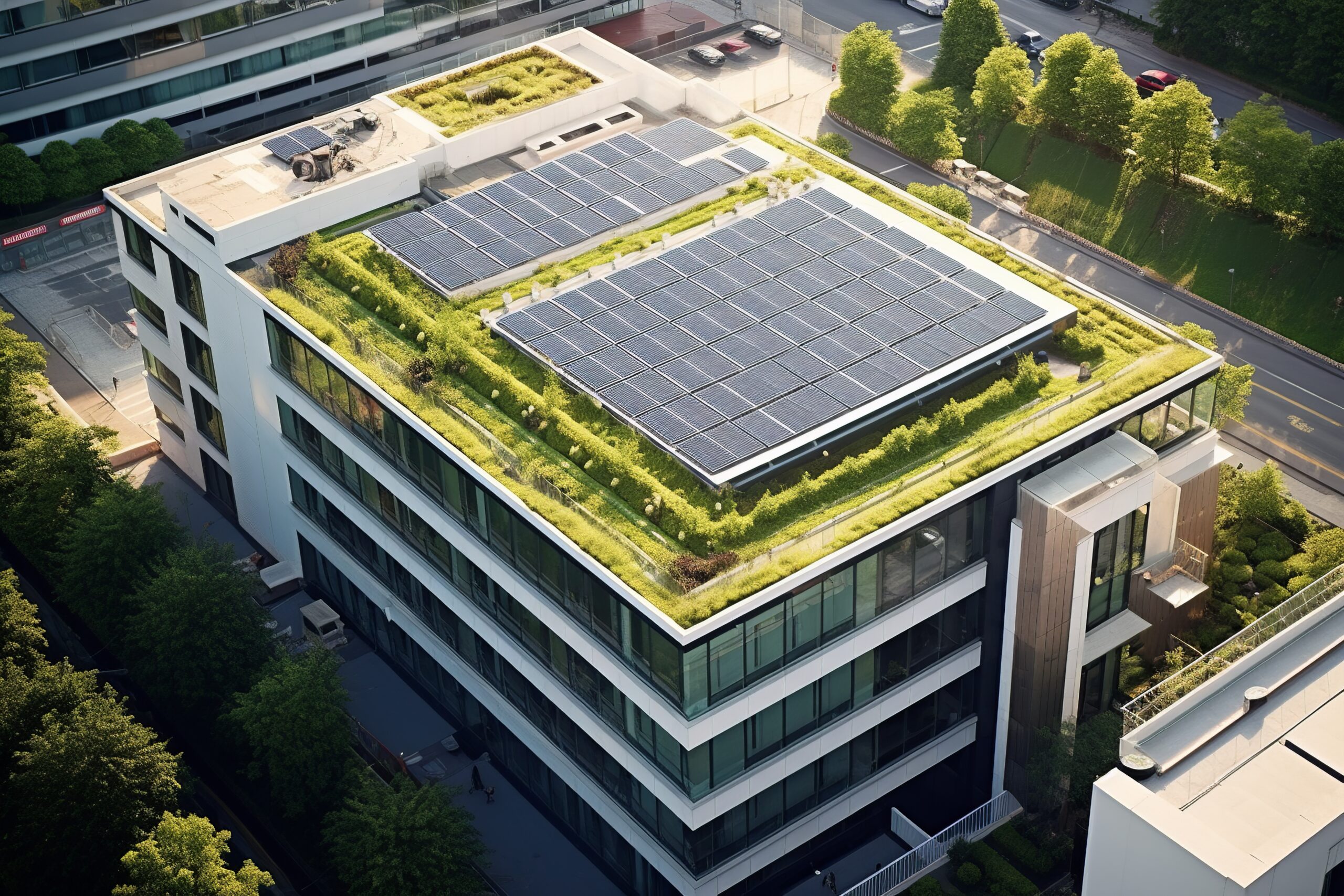
New materials to limit the environmental footprint of the building lifecycle
Green building design and construction regulations are improving the energy efficiency and sustainability of buildings across the globe. In this same context, and in anticipation of future regulations, companies in the sector are developing more sustainable construction methods that play a role in reducing carbon emissions.
From design to construction and through to operation, these changes have significant consequences on the industry at large.
Design: Reduce, reuse, recycle
According to a 2018 study from Lund University in Sweden, “it has now become increasingly important to also look at the embodied energy [of a building], because it might, over the lifespan of the building, equal the energy used for operating the building”.[1]
For this reason, the embodied energy, or carbon footprint, of a building is likely to receive more attention from regulators in years to come, especially given that just three materials – concrete, steel, and aluminium – are responsible for 23% of total global emissions, most of which are used in the built environment.[2]
The Lund University paper goes on to explain that “one way to decrease the embodied energy is to reuse building materials and components or to prepare the building for deconstruction; a term called Design for Deconstruction”.
Design for Deconstruction, also known as Design for Disassembly (DfD), is a growing architectural methodology, which looks at the complete lifecycle of a building and “how decisions made at the design stage can increase the quality and quantity of materials that can be re-used at the end of a building’s life”.[3] This approach favors using “existing materials from demolished sites and finding ways to reuse them in another construction project”, thereby minimizing the use of raw materials and the amount of demolition waste going to landfill.
DfD also looks at designing a building that could be adapted to meet new needs in the future, and although there are relatively few examples of DfD projects, the architectural website Arch Daily explains that “this pursuit is now making its way into mainstream practice”. Some examples include the new London Plan, a spatial development strategy for the city of London, “which will require planning applications to demonstrate how the building components can be disassembled and reused”, as well as the EU project Buildings as Material Banks (BAMB) and the EPA (the United States’ Environmental Protection Agency), which have both drawn out guidelines for this design process.
Construction: Wood, Bamboo, and Sugarcane
As traditional building materials are particularly resource-consuming, alternative and new materials are gaining interest.
Wood, perhaps the world’s oldest construction material, which has conceded ground to concrete and steel over the last 200 years, is once again gaining in popularity thanks to the growing recognition of its ability to “slash the waste, pollution, and costs associated with construction, and create a more physically, psychologically, and aesthetically healthy built environment.”[4] The arrival of mass timber, composed of pieces of wood glued together to form larger pieces, has captured the imagination of architects and builders across the globe and opened up the possibilities for wood-based construction, especially using a type of mass timber known as Cross Laminated Timber or ‘CLT’.
CLT can create large wooden panels, up to 30 centimeters thick and as large as 5.5 meters long by 30 meters wide, matching and even exceeding the performance of concrete and steel. CLT is increasingly being used in the construction of buildings, the tallest of which to date is an 84.5 meter 16-story building, constructed in Norway[5] in 2019.
Bamboo and sugarcane are two rapidly regenerative and inexpensive raw materials that have also started to capture the attention of the building sector in recent years. Thanks to its fibrous composition, sugarcane bagasse, which is the by-product of sugarcane stalk processing, has been used to make flexible panels similar to plywood or Medium Density Fiberboard (MD), and bagasse ash, the residue left over from burning sugarcane bagasse for fuel, is being used as an ecological alternative in Portland cement, replacing “20% to 50% of the cement without adversely affecting its performance”.[6]
Concerning bamboo, which has been widely used in construction for generations, researchers have been exploring whether certain varieties of engineered bamboo have the mechanical properties to transform it into an alternative building material. Although several successful case studies exist, the lack of standards and building codes remain barriers for widescale adoption. According to Built, an online resource for the architecture, engineering, and construction industries, “without building standards and codes, architects and engineers will be reluctant to specify bamboo in their plans despite its clear environmental advantages and aesthetic qualities”.[7]
Operation: Lighting the way to sustainable buildings
When it comes to the regulations governing the energy-efficient operation of buildings, those relating to lighting, and more specifically the phase-out of energy-intensive incandescent and halogen light bulbs, have been among the most successful, leading to the widespread adoption of LEDs.
In the European Union, all member states agreed to a progressive phase-out of incandescent light bulbs by 2012. The EU’s Ecodesign Directive and Energy Labelling Directive, which came into force in September 2021, went a step further by banning certain fluorescent and halogen lamps immediately with further bans planned less two years from now. In addition, they introduced a simpler light bulb energy efficiency scale, ranging from A to G, to help consumers make more informed energy-efficient choices.
These bans have been echoed in countries around the world, however, the success of regulations has not been universal, and in the US, the picture has been less straightforward. A round of EISA restrictions, which would have required everyday light bulbs (called general service lamps) to use 65% less energy than the traditional incandescent light bulbs while still delivering the same amount of light, were scheduled to go into effect on January 1, 2020, but the Department of Energy (DOE) decided to put them on hold. In response to the delay, several states such as California, Nevada, and Washington decided to go ahead and ban some general service lamps regardless.
Despite a lack in regulation, American businesses and consumers are slowly but surely switching to LEDs. According to the DOE, the installed LED stock penetration in 2017 was 19%, with penetration forecasted to reach 84% by 2035.[8]
In China, the world’s leading manufacturer of LEDs, manufacturers benefit from considerable government subsidies and incentives, and the adoption of LED technology has been significant. The market projected to show a Compound Annual Growth Rate (CAGR) of 14.4% from 2020 to 2030.[9]
In general, the price of LEDs has dropped significantly in recent years. They last around 40 times longer than traditional incandescent bulbs and produce the same amount of light using 80% less energy. It is therefore no surprise that LED technology has taken the market by storm.
[1]https://www.mdpi.com/2075-5309/8/11/150
[2]https://architecture2030.org/why-the-building-sector/#:~:text=Buildings%20generate%20nearly%2040%25%20of,for%20an%20additional%2011%25%20annually.
[4] https://www.vox.com/energy-and-environment/2020/1/15/21058051/climate-change-building-materials-mass-timber-cross-laminated-clt
[5]https://www.dezeen.com/2019/03/19/mjostarne-worlds-tallest-timber-tower-voll-arkitekter-norway/
[6]https://www.architectmagazine.com/technology/a-sugar-high-for-architects_s
[7]https://blog.bluebeam.com/building-with-bamboo/
[8]https://publications.jrc.ec.europa.eu/repository/bitstream/JRC122760/status_of_led_lighting_world_market_2020_final_rev_2.pdf
[9]https://publications.jrc.ec.europa.eu/repository/bitstream/JRC122760/status_of_led_lighting_world_market_2020_final_rev_2.pdf

